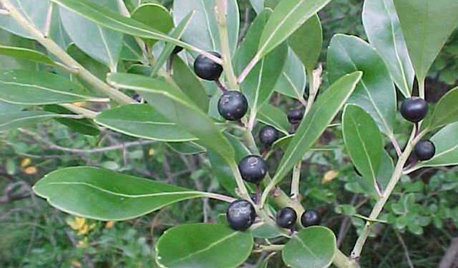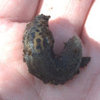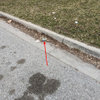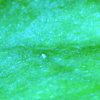Systemic alternative to Imidacloprid???
Greenthumb
12 years ago
Related Stories

MOST POPULARMeet a Lawn Alternative That Works Wonders
Carex can replace turfgrass in any spot, is low maintenance and adjusts easily. Add its good looks and you’ve got a ground cover winner
Full Story
KITCHEN COUNTERTOPSKitchen Countertop Materials: 5 More Great Alternatives to Granite
Get a delightfully different look for your kitchen counters with lesser-known materials for a wide range of budgets
Full Story
MATERIALSMaterials Workshop: Polycarbonate — a Low-Cost Alternative to Glass
Looking for something lighter, stronger and less expensive than glass? Multiwall polycarbonate may be a good option
Full Story
GARDENING GUIDESGarden-Friendly Native Alternatives to Overplanted Exotics
There are lots of gorgeous, wildlife-friendly native plants ready to make an appearance in your garden
Full Story
ROOFS8 Alternative Roof Materials to Buck the Mainstream
Looking for something to raise your roof in the neighborhood? Consider synthetic tiles, recycled composite shingles, green roofs and more
Full Story
PATTERN12 Great Decorative Alternatives to Curtains
Filter light and views while drawing the eye by dressing windows in specialty glass, artistic screens or snazzy shades
Full Story
KITCHEN DESIGN10 Gorgeous Backsplash Alternatives to Subway Tile
Artistic installations, back-painted glass and pivoting windows prove there are backsplash possibilities beyond the platform
Full Story
LANDSCAPE DESIGNBoxwood Alternatives Bring the Chelsea Flower Show to You
Don’t let box blight limit your plans to borrow garden design ideas from the renowned British event
Full Story
KITCHEN STORAGE11 Space-Savvy Alternatives to Wine Cellars
Don't be crushed without a dedicated room for your grape varietals. Store and display your wine the creative, budget-friendly way
Full Story
FLOWERS AND PLANTSEasterners: Consider This Native Alternative to Boxwood
Inkberry, or Ilex glabra, excels as a foundation plant or formal hedge perfectly suited to the East Coast
Full Story









Kimmsr
ronalawn82
Related Professionals
Maple Valley Landscape Architects & Landscape Designers · Comstock Park Landscape Architects & Landscape Designers · Ashburn Landscape Architects & Landscape Designers · Fitchburg Landscape Architects & Landscape Designers · Hershey Landscape Architects & Landscape Designers · Canton Landscape Contractors · Williamsburg Landscape Contractors · Barrington Landscape Contractors · Centereach Landscape Contractors · Haverhill Landscape Contractors · Middleton Landscape Contractors · Painesville Landscape Contractors · Panama City Beach Landscape Contractors · Spring Landscape Contractors · Westford Landscape Contractorsstrobiculate
ronalawn82
GreenthumbOriginal Author
ronalawn82
Kimmsr
ronalawn82
ken_adrian Adrian MI cold Z5
Kimmsr
zen_man
scottys
zen_man